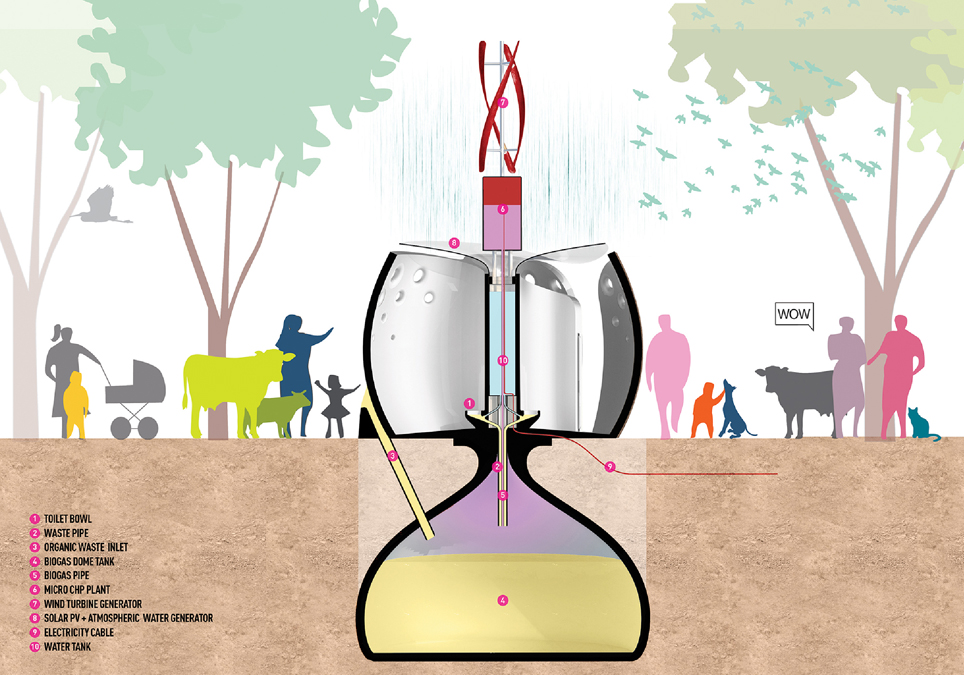SPARK, an architectural studio based in Singapore, Shanghai, and London, is developing a transportable 3D printed toilet module to combat open defecation in India.
The United Nations (UN) initiative, World Toilet day, which took place this Monday, internationally observes and aims to tackle the sanitation crisis. According to the U.N., 4.5 billion people live without “safely managed sanitation” and approximately 892 million people practice open defecation.
To help combat this crisis, SPARK’s aptly named, “Big Arse Toilet” converts human waste into biogas which is then transformed into electricity. The 3D printed toilet module, which is lightweight, will be flown to remote locations by drone and assembled on site.
“SPARK’s self-funded The Big Arse Toilet has been developed to highlight the fact that not enough is being done to provide solutions for vulnerable individuals that are worst affected by lack of access to the level sanitation most take for granted,” said Stephen Pimbley, a SPARK partner.
“Our proposal could help prevent disease and assist in community development by lifting social barriers faced particularly women in rural communities, often meaning serious consequences for their health, perpetuating the disproportionate levels of disease associated with poverty and open defecation.”

The sanitation crisis
In 2013, a call to action on sanitation was made by the previous U.N. Deputy Secretary-General, Jan Kenneth Eliasson, to eliminate open defecation by 2025. Prevalent in developing countries, open defecation is caused by exposure to human feces a result of inadequate water supply and sanitation systems. The U.N. stated:
“Society needs toilets but billions of people don’t have one. This means human feces, on a massive scale, are not being captured or treated contaminating the water and soil that sustain human life. We are turning our environment into an open sewer.”
“We must build toilets and sanitation systems that work in harmony with ecosystems. World Toilet Day is about nature-based solutions to our sanitation needs. When nature calls we have to listen and act.”

The 3D printed Big Arse Toilet
The 3D printed toilet is designed to replicate a traditional biogas dome that uses human, animal and vegetable waste to generate and store gas. The dome, which is sized to function for 10 years, will be buried below ground.
Furthermore, the toilet shell, bowl, and basin will be 3D printed as a single piece from materials consistent of bamboo fibers added to a biopolymer resin. This will act as a cost-effective and resourceful alternative which will be readily available in India.
The curved design of the toilet is also said to be structurally sound and easy to print. SPARK is now seeking funding to develop and prototypes.

Stay updated with SPARK’s 3D printed project as well as all of the latest additive manufacturing innovations by subscribing to our free newsletter. Also, follow us on Twitter and like us on Facebook.
Join 3D Printing Jobs now to search for the next step in your career.
Featured image shows a depiction of the 3D printed toilet modules in India. Image via SPARK.


